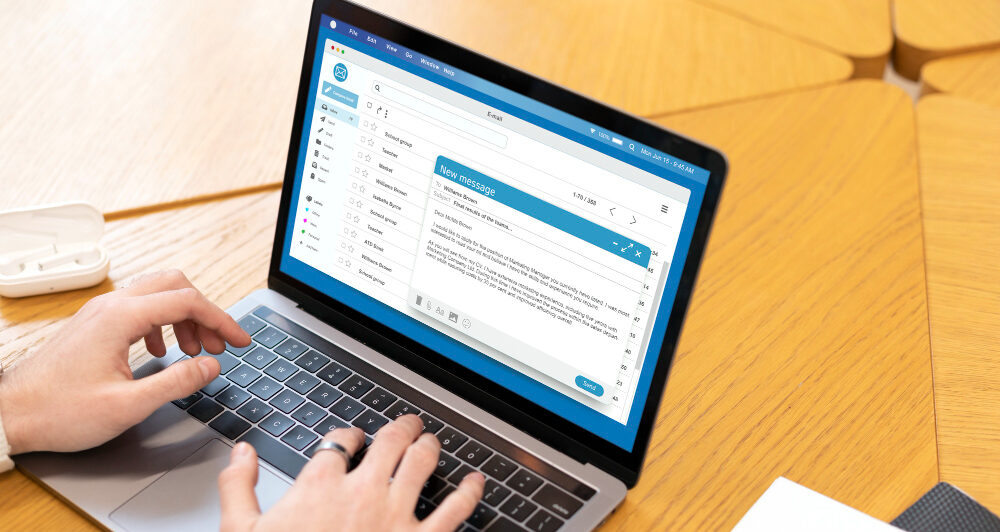7 Best Practices When Emailing Your Customers

Email marketing remains one of the most powerful e-commerce marketing tools at your disposal. On average, it brings in an astonishing $36 for every $1 spent on it while also helping you communicate crucial functional information for customers like order confirmations, shipping updates, and more. But of course, email marketing success is never automatic, even when you’re talking to your current or new customers. Instead, you need to implement several customer email best practices to ensure your audience receives your messages well and engages with them. These seven email marketing best practices can help you get started.
1. Send an Engaging Welcome Email to New Customers
Your welcome email for new people joining your email list might just be your most important piece of email communication. More than 60% of recipients read it, and nearly 15% click on an embedded link in it. But you need to build it right.
Use your welcome email to introduce your brand and products. Also, give them the content they’ve signed up for, like a guide or newsletter. But don’t immediately try to sell new subscribers hard on your products. Instead, give them space to breathe with a conversational, friendly, and welcoming tone that leaves them wanting to read more from you.
You can introduce content your audience might find valuable, go deep on a product, or even include an offer or discount coupon. Just be sure not to sell too hard, which risks turning off new subscribers long before they’re ready to buy from you.
2. Keep Your Emails Short and Skimmable
The average person receives more than 120 emails a day. Imagine if they had to read a novel every time they opened one.
Instead, the key to keeping your audience engaged is keeping your messaging brief and skimmable. Don’t assume that they’ll spend more than a minute reading your content. Keep the total length between 50 and 125 words and lay it out in a way that respects your audience’s F-shaped reading pattern.
A few ways can help you keep your emails brief. Use bullet points and lists where you can, and keep your paragraphs to 1-2 sentences. Keep your focus singular. Be careful not to introduce too many concepts or even CTAs in a single message. Headers, graphics, and strategic bolding can also increase the ease with which your audience can read and consume your email content.
3. A/B Test Your Email Messages, Send Times, Subject Lines, and More
Customer email best practices, like any type of digital marketing, can benefit immensely from moving away from assumptions about what your audience likes or doesn’t like. Even the most commonly accepted email marketing best practices may fall short with your specific industry and audience.
That’s what makes A/B testing such an important component of your email strategy. You can test any component of your email messages and strategy, including:
- Your subject line
- Your email sender
- The email content
- Your email layout
- The CTA language and design
- Your feature image or graphic
- The timing of your emails
- Your email segmentation (more on that below)
- And more
The concept is simple. Run two slightly different versions of the same email to two random segments of your audience. But they should differ in only one of the above components at a time. Then, see which of them performs better, and declare it the winner to learn from for this and future emails. Email software like Klaviyo includes dedicated features that make A/B testing easy.
4. Segment Your Audiences According to Common Interests and Pain Points

Your customers aren’t a single homogenous group, and customer email best practices acknowledge this. They are, however, composed of multiple subgroups that tend to share common characteristics and interests.
Some of the most common and most effective ways to segment your email campaigns include:
- Demographic segmentation based on age, gender, location, and other defining characteristics
- Interest-based segmentation based on which of your products or product categories your subscribers have shown an interest in
- Purchase history segmentation, so you can send more customized emails based on the products or product category individual segments have bought from you
- Website activity segmentation, like sending an email with your returns policy and option only to customers who have recently visited your return policy page
- And more
Much of this segmentation, and the resulting dedicated email campaigns, can be automated. For example, you can automatically set up an email flow to customers purchasing men’s apparel that differs from customers buying women’s apparel. As a result, your messaging will be more relevant and more likely to show results over time.
5. Strategically Grow Your Email List
Even the best email marketing falls flat if you do little more than shout into the void. That’s why no list of customer email best practices is complete without a strategic effort to increase your email signups. Potential tactics include:
- Using a website popup to generate subscriptions
- Offering a product discount for new subscribers
- Making it easier for new subscribers to sign up for emails
- Running a contest or giveaway that requires providing an email address
- Creating the right content for your subscriber popups, including a striking image and compelling language
- Enhancing your popup through strategic delays, scrolling popups, and exit intent popups
- Optimizing your popup and signup forms for mobile devices
Some of these tactics take time. But once you implement all of them, you’ll be well on your way to a consistent pipeline of new email signups that will now receive your optimized emails.
6. Keep Your Email List Clean
If you continue to grow your email list, then you will need to begin thinking about keeping it clean over time. That’s because inactive subscribers can actually hurt your email success by increasing your unsubscribe rates, decreasing your deliverability score, and negatively affecting your positive KPIs.
Good email list hygiene protects you from these concerns becoming a reality. Create win-back emails that seek to engage subscribers who have been inactive for a short time. If they continue to be inactive for a longer period, then suppress the reception of future emails. You can do the same for subscribers who have bounced or never interacted with any of your messages.
Much of your email list hygiene can be automated with the right software platform. Still, this is an important best practice to avoid becoming automatically tagged as spam by your subscribers’ email services.
7. Learn From Your Email Marketing Analytics
Finally, never underestimate the power of analytics when it comes to implementing these customer email best practices. They’re your best way to determine whether and how your individual emails are working, as well as how they’re contributing to your overall business success.
That means tracking the right KPIs. Email opens are great, but clicks are better. Conversions on your online store from emails are best. Meanwhile, low unsubscribe and spam rates can help you track the health and relevance of your email lists.
Set up regular reports to track these metrics for all of your individual emails. Then, evaluate the reports to tweak your campaigns and messages as needed. Over time, you’ll improve your marketing to the point of generating the ROI mentioned at the start of this guide.
Implement Customer Email Best Practices to Grow Your E-Commerce Business
Email marketing in e-commerce has the potential to be immensely powerful. But to get there, you need to know how to implement it. Fortunately, you’re not on your own.
Contact us to discuss a potential partnership with Future Holidays to build and optimize both your email campaigns and the online store they connect to, using powerful software tools like Shopify and Klaviyo alongside our extensive e-commerce expertise.


